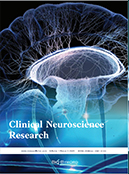The Application of Video Electroencephalogram in the Classification and Diagnosis of Post-Stroke Epilepsy
Abstract
Objective: To explore the value of video electroencephalogram in the classification and diagnosis of post-stroke epilepsy. Methods: The medical records of patients diagnosed with suspected post-stroke epilepsy in our hospital from November 2020 to November 2023 were retrospectively analyzed, and a total of 116 research subjects were included based on several inclusion and exclusion criteria. All patients had undergone video and conventional electroencephalogram. The detection of epileptic discharges and clinical symptoms by the two methods were evaluated, their diagnostic efficacies were compared, and the effect of video electroencephalography on post-stroke patients was analyzed. Classification of epilepsy. Results: The comprehensive clinical diagnosis conclusion showed that among 116 patients with suspected post-stroke epilepsy, a total of 64 cases were diagnosed. The diagnostic accuracy, specificity, and sensitivity of video electroencephalogram were significantly higher than those of conventional electroencephalogram. Besides, among the patients diagnosed with post-stroke epilepsy, the detection rate of epileptiform discharges and clinical seizures by video electroencephalogram was significantly higher than that of conventional electroencephalogram (P < 0.05). Among the clinical seizure cases detected by video electroencephalogram, only 6 cases were inconsistent with the epilepsy classification based on a comprehensive clinical diagnosis. Conclusion: Video electroencephalogram has important value in diagnosing and classifying post-stroke epilepsy.
References
Dang Y, Wang M, 2023, Analysis of the Value of Electroencephalogram Monitoring for Early Diagnosis of Epilepsy Patients. Guizhou Medicine, 47(5): 772–773.
Lu D, 2023, Clinical Significance of 18F-FDG PET and MRI Brain Metabolism Imaging in the Localization Diagnosis of Epileptogenic Lesions in Temporal Lobe Epilepsy. Modern Medical Imaging, 32(3): 438–441.
Lu P, 2023, Comparison of The Value of Dynamic Electroencephalography and Video Electroencephalography in Diagnosing Non-Convulsive Epilepsy in Children. Primary Medicine Forum, 27(4): 15–17.
Liu Q, Dong Y, Han Y, 2023, Clinical Value of Video Electroencephalography Combined with MRI Positioning in Diagnosing Symptomatic Epilepsy in Children. Journal of Clinical and Experimental Medicine, 22(11): 1204–1207.
Yu G, Wang W, Gao Y, et al., 2019, Diagnostic Value of Continuous Electroencephalogram Monitoring for PostStrokeEpilepsy. Journal of New Medical Knowledge, 29(1): 31–32 + 35.
Shen Y, Zheng Y, Fang W, 2020, The Differential Diagnostic Value of Head MR Combined with Electroencephalography for Epileptic Seizure Types after Stroke. Zhejiang Journal of Integrated Traditional Chinese and Western Medicine, 30(10): 843-846.
Liang J, 2022, Comparative Analysis of Conventional and Video Electroencephalography’s Monitoring Value in Post-Stroke Epilepsy. China Medical Device Information, 28(21): 76–79.
Qi Y, Zhang H, Geng Y, 2021, Characteristics and Clinical Prognosis of Video Electroencephalography in Patients with Post-Stroke Epilepsy. Imaging Research and Medical Applications, 5(19): 235–236 + 240.
Zhang S, 2020, Clinical Characteristics and Video Electroencephalogram Analysis of Post-Stroke Epileptic Seizures. Chinese Medical Journal, 55(2): 203–206.
Xia M, Yu J, Kong Q, 2020, Clinical Characteristics and Video Electroencephalogram Analysis of Post-Stroke Epilepsy. Journal of Epilepsy, 6(5): 410–415.

